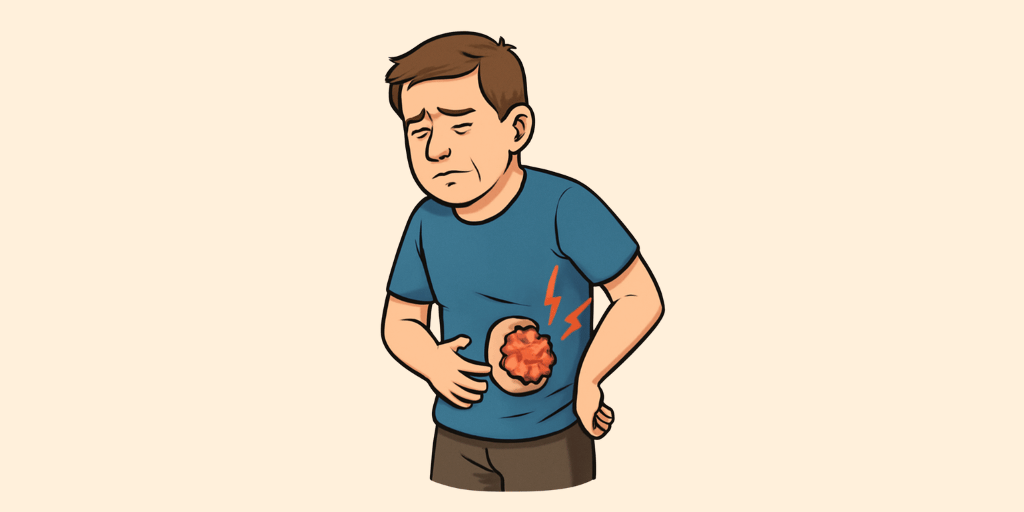Ayurvedic Name: Gulm
Description:
Gulm is abdominal tumors or masses, which can be benign or malignant, resulting from aggravated Vata, Pitta, or Kapha obstructing channels. Symptoms include bloating, pain, and digestive issues. Treatment includes herbal decoctions like Triphala and surgical interventions in severe cases.
Signs & Symptoms:
- Udara Griha (Abdominal Tumor): Pain or swelling in the abdomen, often accompanied by a palpable mass.
- Vishama Agni (Irregular Digestion): Digestive disturbances, including bloating, constipation, or nausea.
- Shwasa (Breathlessness): Difficulty breathing due to pressure from the tumor on the lungs or diaphragm.
- Dourbalya (Weakness): Fatigue and weakness, often associated with cancer or large tumors.
- Rukshata (Dryness): Dryness in the mouth, skin, or body due to the tumor’s effects on overall health.
- Gaurava (Heaviness): A sensation of heaviness or fullness in the abdomen, often exacerbated after eating.
Diagnosis:
Ultrasound or CT Scan of the Abdomen
Risk Factors:
- Dietary Factors
Excessive Processed Foods or Red Meat: Diets high in red meat, processed foods, and low in fiber have been associated with an increased risk of abdominal tumors.
Low Intake of Antioxidants: A diet low in fruits and vegetables can impair the body’s ability to prevent cancerous growths in the abdomen. - Lifestyle Factors
Alcohol Consumption: Excessive alcohol intake can increase the risk of liver cancer and abdominal tumors.
Lack of Physical Activity: Physical inactivity is linked to obesity and abdominal tumors, particularly in the colon and liver. - Medical Conditions
Liver Cirrhosis or Hepatitis: Chronic liver disease or viral infections increase the risk of liver cancer.
Family History of Cancer: A family history of gastrointestinal cancer increases the risk of developing abdominal tumors.
Complications:
- Organ Compression (Anga Vikruti): Abdominal tumors can press against nearby organs such as the intestines, liver, or kidneys, leading to pain, difficulty in digestion, and organ dysfunction.
- Obstruction (Gati Vikruti): Tumors can obstruct the digestive tract, causing symptoms like nausea, vomiting, and severe constipation.
- Internal Bleeding (Rakta Dushana): Tumors, especially malignant ones, can lead to internal bleeding in the abdominal cavity, resulting in anemia or shock.
- Weight Loss (Ksheena): Cancerous tumors can lead to unexplained weight loss due to the body’s increased energy requirements for fighting the tumor.
- Peritoneal Spread (Udara Vikruti): In advanced stages, abdominal tumors can spread to the peritoneal cavity (lining of the abdominal organs), leading to widespread cancer and organ failure.
Epidemeology:
Incidence varies based on the type of tumor (benign vs. malignant), but globally, approximately 1 in 100,000 people develop abdominal tumors each year.
More common in individuals over 40, with higher incidence in men for conditions like liver cancer and gastrointestinal stromal tumors (GISTs).
Liver and colon cancer are the most common forms of abdominal tumors, with the liver cancer rate being particularly high in Asia and sub-Saharan Africa due to hepatitis B and C.
Higher incidence in individuals with a family history of cancer, poor diet, obesity, or exposure to carcinogens (e.g., smoking or alcohol use).

